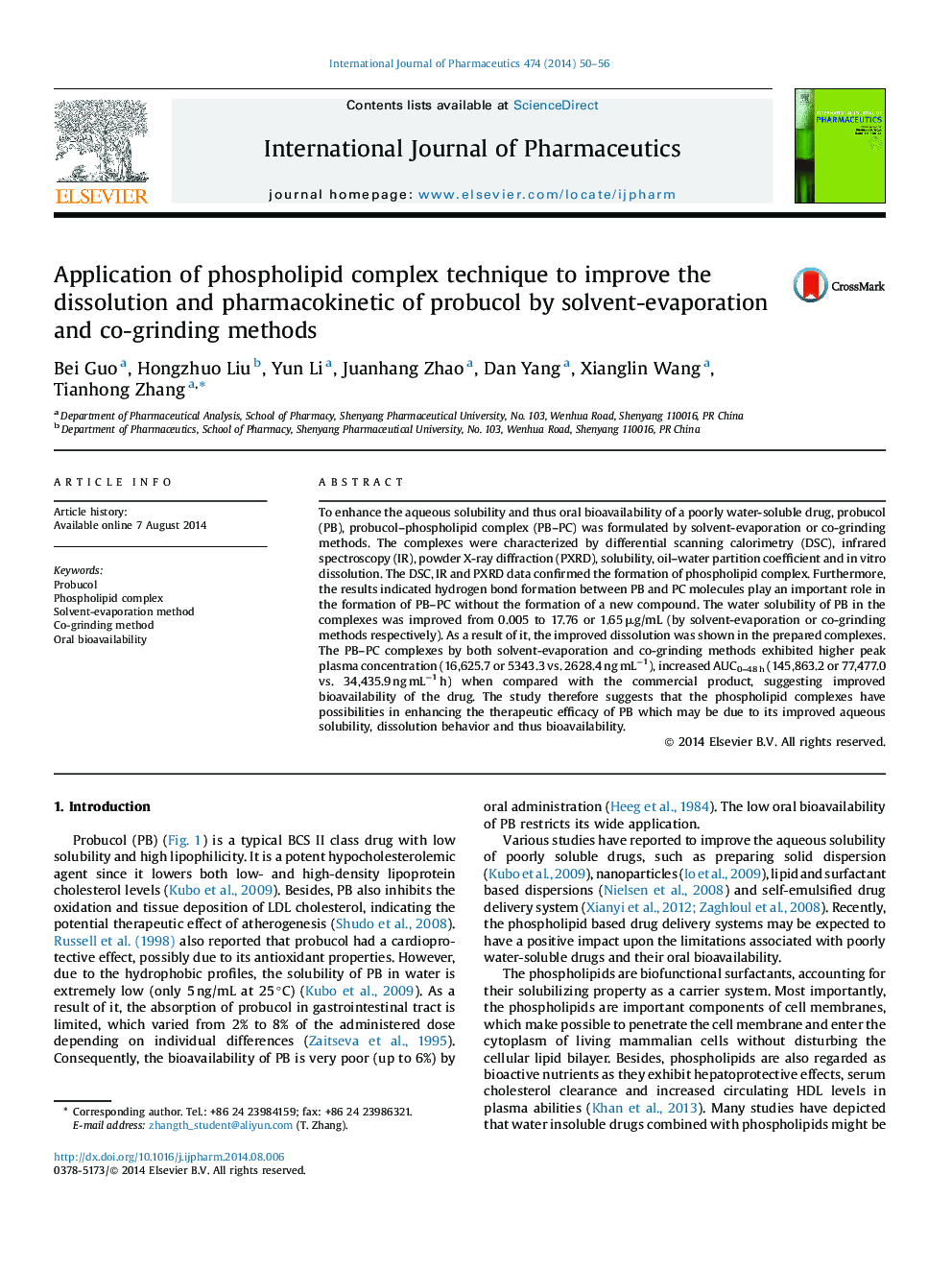| Article ID | Journal | Published Year | Pages | File Type |
|---|---|---|---|---|
| 2501788 | International Journal of Pharmaceutics | 2014 | 7 Pages |
To enhance the aqueous solubility and thus oral bioavailability of a poorly water-soluble drug, probucol (PB), probucol–phospholipid complex (PB–PC) was formulated by solvent-evaporation or co-grinding methods. The complexes were characterized by differential scanning calorimetry (DSC), infrared spectroscopy (IR), powder X-ray diffraction (PXRD), solubility, oil–water partition coefficient and in vitro dissolution. The DSC, IR and PXRD data confirmed the formation of phospholipid complex. Furthermore, the results indicated hydrogen bond formation between PB and PC molecules play an important role in the formation of PB–PC without the formation of a new compound. The water solubility of PB in the complexes was improved from 0.005 to 17.76 or 1.65 μg/mL (by solvent-evaporation or co-grinding methods respectively). As a result of it, the improved dissolution was shown in the prepared complexes. The PB–PC complexes by both solvent-evaporation and co-grinding methods exhibited higher peak plasma concentration (16,625.7 or 5343.3 vs. 2628.4 ng mL−1), increased AUC0–48 h (145,863.2 or 77,477.0 vs. 34,435.9 ng mL−1 h) when compared with the commercial product, suggesting improved bioavailability of the drug. The study therefore suggests that the phospholipid complexes have possibilities in enhancing the therapeutic efficacy of PB which may be due to its improved aqueous solubility, dissolution behavior and thus bioavailability.
Graphical abstractFigure optionsDownload full-size imageDownload high-quality image (85 K)Download as PowerPoint slide
